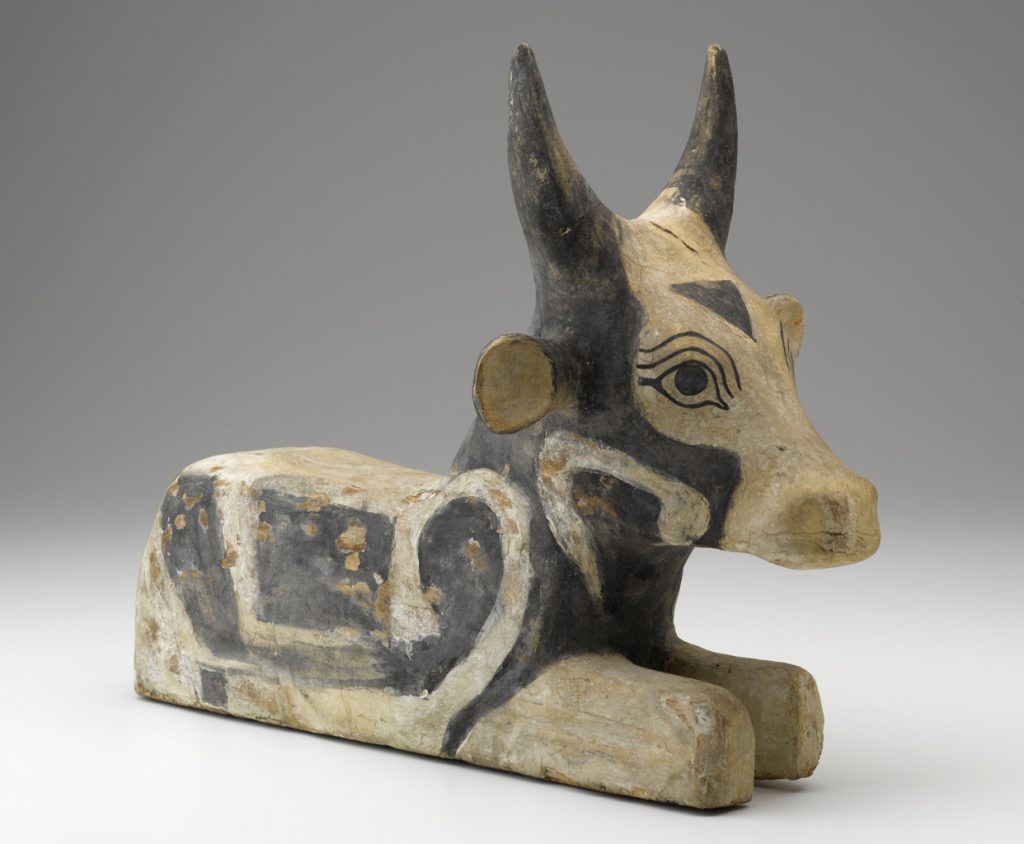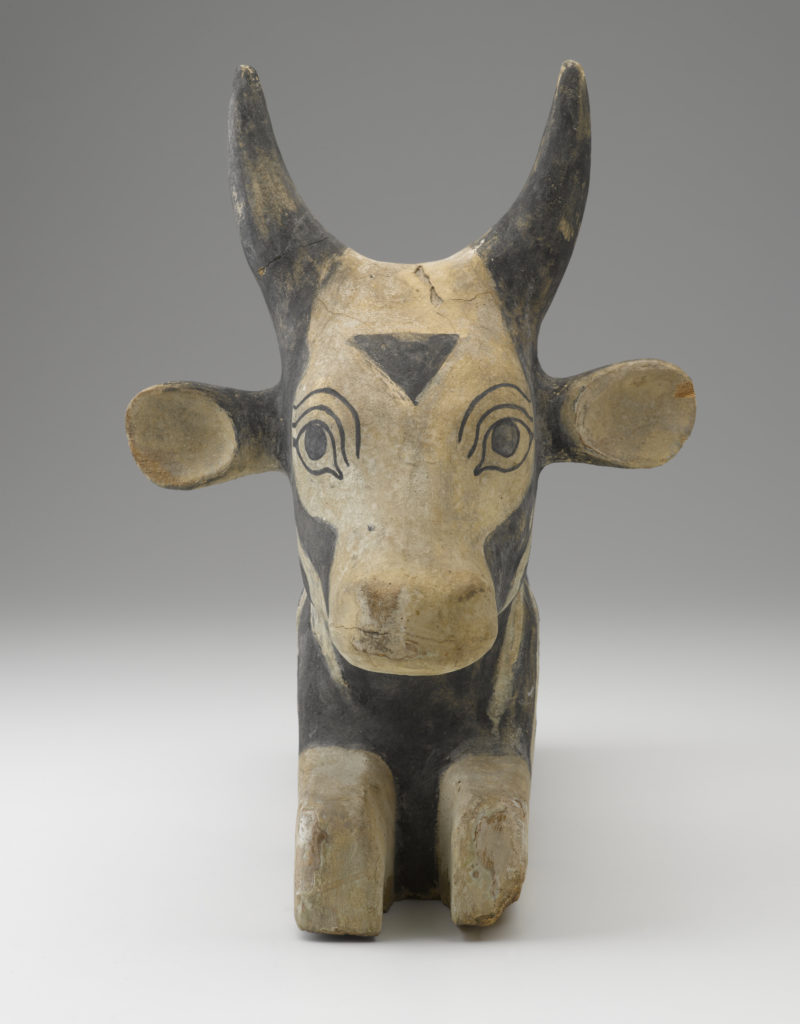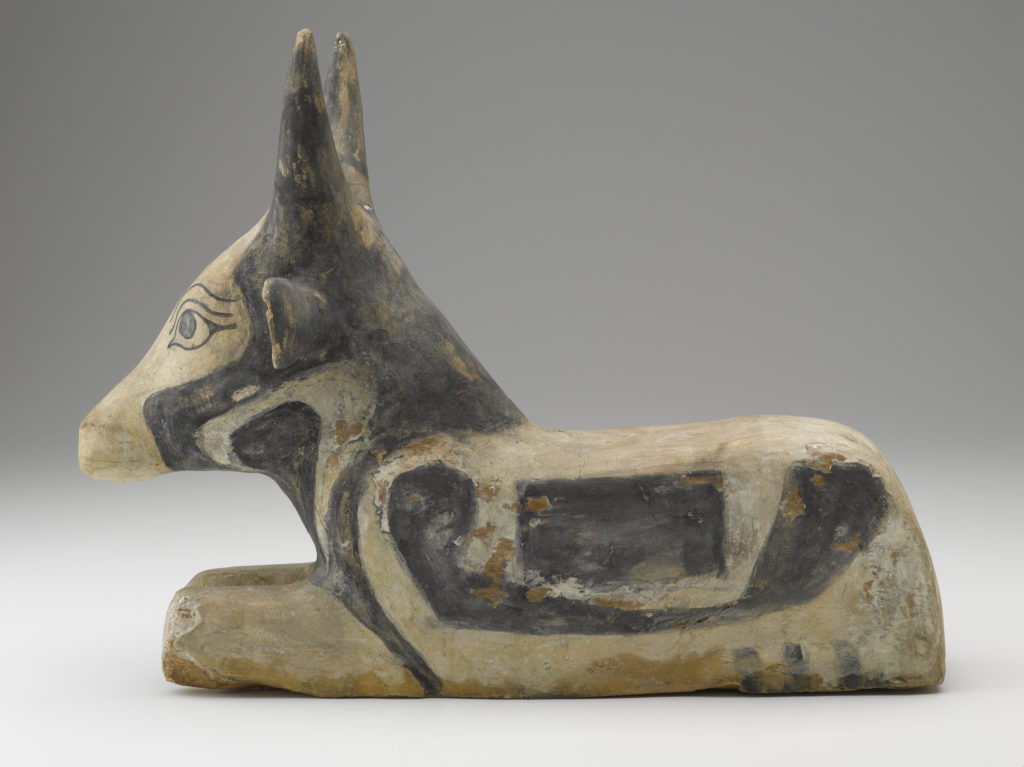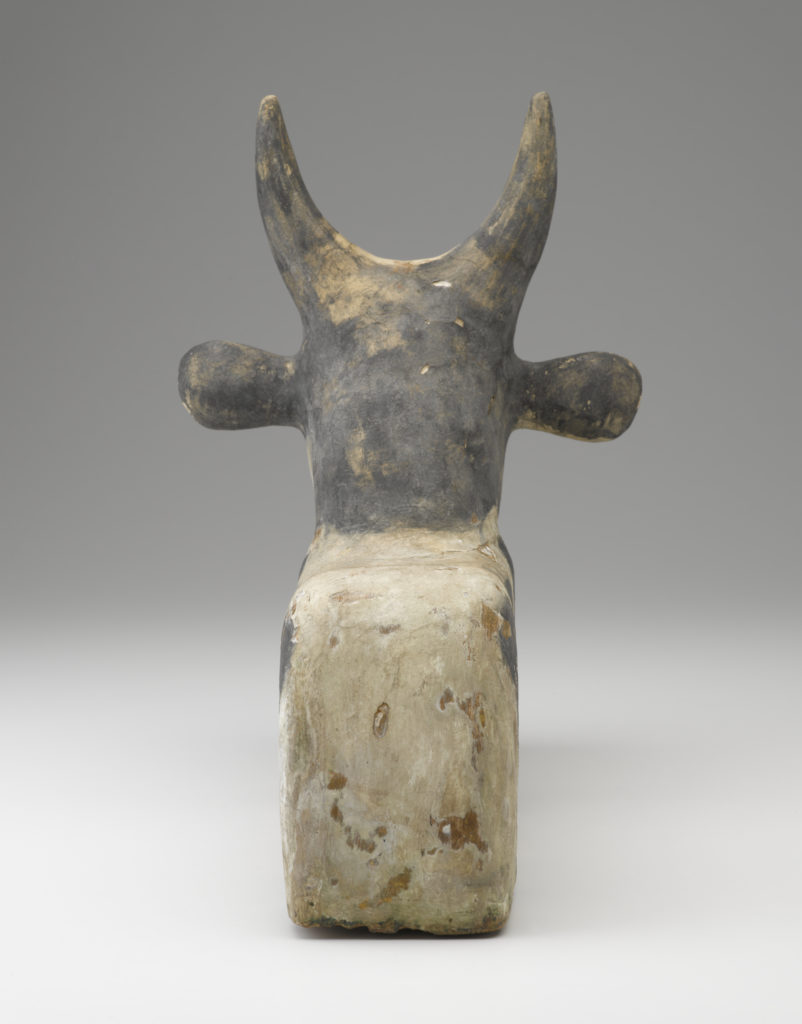Reclining Bull (work of art)
Artwork Info
Key Ideas about this Work of Art
- This sculpture is carved from wood and decorated with black and white paint. The paint colors create a strong visual contrast to make the markings on the bull stand out.
- The sculpture depicts the Apis bull, a stand-in for Ptah (pronounced puh-tah), the creator god of the Egyptian city of Memphis. The black coat and white markings on the body, and the white on the bull’s muzzle, are characteristics of the Apis bull.
- Ancient Egyptians did not worship animals, but they did value certain animals for their connection to a god or goddess. A specific animal that was identified with a god or goddess served as a home for the soul of the deity during its lifetime.
Learn More
Animal cults of ancient Egypt are greatly misinterpreted. Animals were not worshiped by the people, but one specific animal was said to be the manifestation of a specific deity’s power and was believed to house its ba, or soul, during the animal’s lifetime. At death the animal was mummified and buried in an elaborate tomb, and another animal was chosen to replace it as the avatar, or bodily form, of that god. The god’s ba was said to be reborn in the new animal.
Bulls and cows were considered sacred in ancient Egypt. The best-known bull cult is that of the Apis bull, the avatar of Ptah, creator god of the ancient city of Memphis. The distinctive markings of the Apis bull are a black coat with white markings and a white blaze, or vertical stripe, from the forehead to the nostrils and mouth.
tags: animals, environment, observation, ritual, ancient Egypt
Additional Resources
Resources for Teachers
- View the ivory Apis Bull Statuette from the Metropolitan Museum of Art.
- Learn more about bull cults in ancient Egypt.
Resources for Students
- Learn more about the Apis bull.
- Discover the sacred animals of ancient Egypt.




